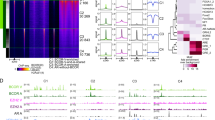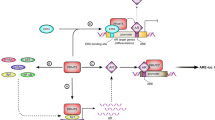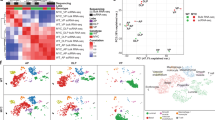Abstract
The incidence of prostate cancer is increasing in western countries because of population aging. Prostate cancer begins as an androgen-dependent disease, but it can become androgen independent at a later stage or in tumors recurring after an antihormonal treatment. Although many genetic events have been described to be involved in androgen-dependent and/or -independent prostate cancer growth, little is known about the contribution of epigenetic events. Here we have examined the possibility that the methyl-CpG-binding protein MECP2 might play a role in controlling the growth of prostate cancer cells. Inhibition of MECP2 expression by stable short hairpin RNA stopped the growth of both normal and cancer human prostate cells. In addition, ectopic expression of the MECP2 conferred a growth advantage to human prostate cancer cells. More importantly, this expression allowed androgen-dependent cells to grow independently of androgen stimulation and to retain tumorigenic properties in androgen-depleted conditions. Analysis of signaling pathways showed that this effect is independent of androgen receptor signaling. Instead, MECP2 appears to act by maintaining a constant c-myc level during antihormonal treatment. We further show that MECP2-expressing cells possess a functional p53 pathway and are still responsive to chemotherapeutic drugs.
This is a preview of subscription content, access via your institution
Access options
Subscribe to this journal
Receive 50 print issues and online access
$259.00 per year
only $5.18 per issue
Buy this article
- Purchase on Springer Link
- Instant access to full article PDF
Prices may be subject to local taxes which are calculated during checkout





Similar content being viewed by others
References
Abate-Shen C, Shen MM . (2000). Genes Dev 14: 2410–2434.
Abrahamsson PA, Falkmer S, Falt K, Grimelius L . (1989). Pathol Res Pract 185: 373–380.
Ahlgren G, Pedersen K, Lundberg S, Aus G, Hugosson J, Abrahamsson PA . (2000). Prostate 42: 274–279.
Baylin SB, Herman JG . (2000). Trends Genet 16: 168–174.
Bernard D, Pourtier-Manzanedo A, Gil J, Beach DH . (2003). J Clin Invest 112: 1724–1731.
Bernard D, Quatannens B, Begue A, Vandenbunder B, Abbadie C . (2001). Cancer Res 61: 2656–2664.
Burgers WA, Fuks F, Kouzarides T . (2002). Trends Genet 18: 275–277.
Carlson CA, Ethier SP . (2000). Radiat Res 154: 590–599.
Carroll AG, Voeller HJ, Sugars L, Gelmann EP . (1993). Prostate 23: 123–134.
Chen CD, Welsbie DS, Tran C, Baek SH, Chen R, Vessella R et al. (2004). NatMed 10: 33–39.
Cheng JC, Yoo CB, Weisenberger DJ, Chuang J, Wozniak C, Liang G et al. (2004). Cancer Cell 6: 151–158.
Cohen RJ, Glezerson G, Haffejee Z, Afrika D . (1990). Br J Urol 66: 405–410.
Denmeade SR, Isaacs JT . (2002). Nat Rev Cancer 2: 389–396.
Dobosy JR, Selker EU . (2001). Cell Mol Life Sci 58: 721–727.
Feldman BJ, Feldman D . (2001). Nat Rev Cancer 1: 34–45.
Fojo T, Bates S . (2003). Oncogene 22: 7512–7523.
Fuks F, Hurd PJ, Wolf D, Nan X, Bird AP, Kouzarides T . (2003). J Biol Chem 278: 4035–4040.
Futreal PA, Coin L, Marshall M, Down T, Hubbard T, Wooster R et al. (2004). Nat Rev Cancer 4: 177–183.
Goffin J, Eisenhauer E . (2002). Ann Oncol 13: 1699–1716.
Hanahan D, Weinberg RA . (2000). Cell 100: 57–70.
He TC, Sparks AB, Rago C, Hermeking H, Zawel L, da Costa LT et al. (1998). Science 281: 1509–1512.
Hirano D, Okada Y, Minei S, Takimoto Y, Nemoto N . (2004). Eur Urol 45: 586–592.
Hudson DL, Masters JR . (2003). Methods Mol Med 81: 59–67.
Jones PA . (2002). Oncogene 21: 5358–5360.
Kasibhatla S, Brunner T, Genestier L, Echeverri F, Mahboubi A, Green DR . (1998). Mol Cell 1: 543–551.
Kellen JA . (1994). Anticancer Res 14: 433–435.
Kimura H, Shiota K . (2003). J Biol Chem 278: 4806–4812.
Kongkanuntn R, Bubb VJ, Sansom OJ, Wyllie AH, Harrison DJ, Clarke AR . (1999). Oncogene 18: 7219–7225.
Kudo S, Nomura Y, Segawa M, Fujita N, Nakao M, Dragich J et al. (2001). Brain Dev 23 (Suppl 1): S165–S173.
Li L-C, Okino ST, Dahiya R . (2004). Biochim Biophys Acta (BBA) Rev Cancer 1704: 87–102.
Lund AH, van Lohuizen M . (2004). Cur Opin Cell Biol 16: 239–246.
Miyoshi Y, Uemura H, Kitami K, Satomi Y, Kubota Y, Hosaka M . (2001). BJU Int 88: 982–983.
Nan X, Cross S, Bird A . (1998a). Novartis Found Symp 214: 6–16; discussion 16–21, 46–50.
Nan X, Ng HH, Johnson CA, Laherty CD, Turner BM, Eisenman RN et al. (1998b). Nature 393: 386–389.
Nelson WG, De Marzo AM, Isaacs WB . (2003). N Engl J Med 349: 366–381.
Ng HH, Zhang Y, Hendrich B, Johnson CA, Turner BM, Erdjument-Bromage H et al. (1999). Nat Genet 23: 58–61.
Porkka KP, Visakorpi T . (2004). Eur Urol 45: 683–691.
Sansom OJ, Berger J, Bishop SM, Hendrich B, Bird A, Clarke AR . (2003). Nat Genet 34: 145–147.
Sears RC . (2004). Cell Cycle 3: 1133–1137.
Shah RB, Mehra R, Chinnaiyan AM, Shen R, Ghosh D, Zhou M et al. (2004). Cancer Res 64: 9209–9216.
Taplin ME, Balk SP . (2004). J Cell Biochem 91: 483–490.
Tetu B, Ro JY, Ayala AG, Johnson DE, Logothetis CJ, Ordonez NG . (1987). Cancer 59: 1803–1809.
Valkov NI, Sullivan DM . (2003). Drug Resistance Updates 6: 27–39.
Visakorpi T . (2003). Urology 62: 3–10.
Wang J, Xie LY, Allan S, Beach D, Hannon GJ . (1998). Genes Dev 12: 1769–1774.
Wolf DA, Schulz P, Fittler F . (1992). Mol Endocrinol 6: 753–762.
Wright ME, Tsai MJ, Aebersold R . (2003). Mol Endocrinol 17: 1726–1737.
Yeap BB, Krueger RG, Leedman PJ . (1999). Endocrinology 140: 3282–3291.
Yoshida M, Furumai R, Nishiyama M, Komatsu Y, Nishino N, Horinouchi S . (2001). Cancer Chemother Pharmacol 48 (Suppl 1): S20–S26.
Zhu WG, Otterson GA . (2003). Curr Med Chem Anti-Canc Agents 3: 187–199.
Acknowledgements
We thank members of Yvan de Launoit's laboratory for helpful discussions. We also thank S Kudo for the pcdMP4 vector and the RA7 MECP2 antibody. This work was carried out with the support of the FNRS (Belgium), the ‘Action de Recherche Concertée de la Communauté Française de Belgique’, ‘Fortis Bank assurances’ (Belgium), the ‘Fédération Belge Contre le Cancer’, the CNRS (France), the ARC (France), the FRM Nord Pas de Calais (France), the ‘Conseil Régional Nord/pas-de-Calais’ (France), and the European Regional Development Fund. JG is supported by Human Frontiers Science Program and Cancer Research UK. DB is supported by a Marie Curie Intra-European Fellowship within the sixth European Community Framework Program. FF is a ‘Chercheur Qualifié du FNRS’.
Author information
Authors and Affiliations
Corresponding author
Additional information
Supplementary Information accompanies the paper on Oncogene website (http://www.nature.com/onc).
Rights and permissions
About this article
Cite this article
Bernard, D., Gil, J., Dumont, P. et al. The methyl-CpG-binding protein MECP2 is required for prostate cancer cell growth. Oncogene 25, 1358–1366 (2006). https://doi.org/10.1038/sj.onc.1209179
Received:
Revised:
Accepted:
Published:
Issue Date:
DOI: https://doi.org/10.1038/sj.onc.1209179
Keywords
This article is cited by
-
A central role for MeCP2 in the epigenetic repression of miR-200c during epithelial-to-mesenchymal transition of glioma
Journal of Experimental & Clinical Cancer Research (2019)
-
Targeting epigenetic regulators for cancer therapy: mechanisms and advances in clinical trials
Signal Transduction and Targeted Therapy (2019)
-
Preliminary screening of differentially expressed genes involved in methyl-CpG-binding protein 2 gene-mediated proliferation in human osteosarcoma cells
Tumor Biology (2015)
-
CFIm25 links alternative polyadenylation to glioblastoma tumour suppression
Nature (2014)
-
Rett Syndrome and MeCP2
NeuroMolecular Medicine (2014)



